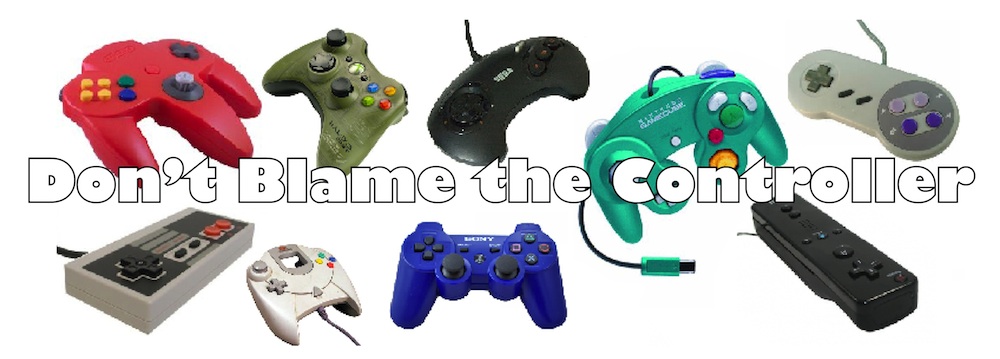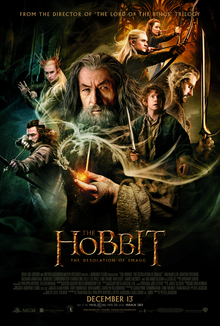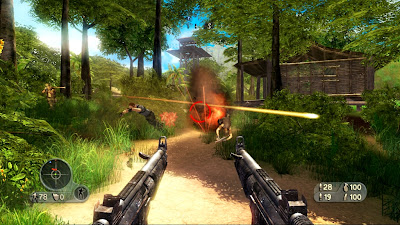Title: The Hobbit: The Desolation of Smaug
Director: Peter Jackson
Written by: Peter Jackson, Fran Walsh, Philippa Boyens, Guillermo del Toro
Starring: Ian McKellen, Martin Freeman, Richard Armitage, Evangeline Lilly, Benedict Cumberbatch, Luke Evans
What a difference a year makes. Twelve months ago Peter Jackson released The Hobbit: An Unexpected Journey, the first part of a trilogy meant to tell the modest tale of J.R.R. Tolkien's homebody-cum-burglar, to less than stellar reviews. Critics (rightfully) skewered Jackson for the movie's long running time, its over-reliance on digital effects, and its inclusion of superfluous characters and events. Now, a year later, Jackson unveils the inevitable sequel, The Desolation of Smaug, a movie that shares all of the issues that haunted the first Hobbit production yet manages to be surprisingly good. The movie is long, only eight minutes shorter than its predecessor, yet it leaves one wanting more, whereas An Unexpected Journey couldn't end soon enough. The movie is packed, bloated even, with expensive digital effects, yet they are used more wisely on several thrilling set-pieces and to bring the true star of the movie, Smaug, to life. The movie introduces several new characters and storylines absent from Tolkien's original book, yet these characters, especially newcomer Tauriel (Evangeline Lilly), and storylines serve to bind the story together and tie it to Jackson's larger mythology. In short, everything that went wrong in An Unexpected Journey goes right in The Desolation of Smaug.
After a brief flashback, which sets the stage and tone for the 160 minutes to follow, The Desolation of Smaug picks up where the previous movie ended. The reluctant burglar Bilbo Baggins, a company of dwarves, and one sagely wizard flee from pursuing orcs on a quest to reclaim the dwarves' homeland, a mountain kingdom far to the east. The movie gets off to a somewhat slow and shaky start, but by the time the party reaches the poisoned forest Mirkwood, things become more interesting, more lively, and more evenly paced.
In Mirkwood the movie gains momentum, a sense of purpose, and a conscience, the latter thanks to Tauriel, a wood elf who sympathizes with the dwarves and is able to look beyond the borders of the woodland realm to see darkness creeping over the lands of Middle Earth. Both Tauriel and her companion Legolas (Orlando Bloom), one of the stars of the Lord of the Rings trilogy, do not belong in The Hobbit as written by Tolkien, but they belong here in Peter Jackson's version of the story. Bloom's reprisal as Legolas could be easily dismissed as cynical stunt casting, but his character plays an important part in the narrative. He represents the isolationism and xenophobia of the wood elves contrasted against Tauriel's growing sense of duty. The success of this elven twosome, neither of whom are important (or even present) in the original book, is representative of the entire movie, which diverges smartly and successfully from the source material. Where An Unexpected Journey demonstrated a rigid, unimaginative loyalty to Tolkien's words, The Desolation of Smaug wisely forges its own path, discarding and reinventing characters and events to create a more fluid, coherent, and watchable story.
In addition to better storytelling, The Desolation of Smaug features much-improved action set-pieces, including a scary and shocking encounter with giant spiders in Mirkwood forest and a waterlogged barrel-bound escape sequence as fun, creative, and spectacular as anything in The Lord of the Rings movies.
However, nothing in the movie is quite as spectacular as its eponymous villain, Smaug. The digital effects magicians at Weta Digital have created in Smaug perhaps the finest movie dragon of all time, a towering inferno of razor-sharp claws and scaly armor. Voiced in Benedict Cumberbatch's deep baritone, Smaug emerges as a conceited, greedy, intelligent, deeply paranoid character. His one-on-one psychological showdown with Bilbo is perhaps the highlight of the movie, just as Bilbo's riddle contest with Gollum was the highlight of An Unexpected Journey.
The success of The Desolation of Smaug goes a long way toward submerging the memory of the failed first chapter of the trilogy and raises new hopes for the third and final installment. Jackson and company seem to have finally recaptured some of the humor, majesty, and creative energy that defined his Lord of the Rings trilogy. Hopefully this latest trilogy will end on a similarly high note.
Director: Peter Jackson
Written by: Peter Jackson, Fran Walsh, Philippa Boyens, Guillermo del Toro
Starring: Ian McKellen, Martin Freeman, Richard Armitage, Evangeline Lilly, Benedict Cumberbatch, Luke Evans
What a difference a year makes. Twelve months ago Peter Jackson released The Hobbit: An Unexpected Journey, the first part of a trilogy meant to tell the modest tale of J.R.R. Tolkien's homebody-cum-burglar, to less than stellar reviews. Critics (rightfully) skewered Jackson for the movie's long running time, its over-reliance on digital effects, and its inclusion of superfluous characters and events. Now, a year later, Jackson unveils the inevitable sequel, The Desolation of Smaug, a movie that shares all of the issues that haunted the first Hobbit production yet manages to be surprisingly good. The movie is long, only eight minutes shorter than its predecessor, yet it leaves one wanting more, whereas An Unexpected Journey couldn't end soon enough. The movie is packed, bloated even, with expensive digital effects, yet they are used more wisely on several thrilling set-pieces and to bring the true star of the movie, Smaug, to life. The movie introduces several new characters and storylines absent from Tolkien's original book, yet these characters, especially newcomer Tauriel (Evangeline Lilly), and storylines serve to bind the story together and tie it to Jackson's larger mythology. In short, everything that went wrong in An Unexpected Journey goes right in The Desolation of Smaug.
After a brief flashback, which sets the stage and tone for the 160 minutes to follow, The Desolation of Smaug picks up where the previous movie ended. The reluctant burglar Bilbo Baggins, a company of dwarves, and one sagely wizard flee from pursuing orcs on a quest to reclaim the dwarves' homeland, a mountain kingdom far to the east. The movie gets off to a somewhat slow and shaky start, but by the time the party reaches the poisoned forest Mirkwood, things become more interesting, more lively, and more evenly paced.
In Mirkwood the movie gains momentum, a sense of purpose, and a conscience, the latter thanks to Tauriel, a wood elf who sympathizes with the dwarves and is able to look beyond the borders of the woodland realm to see darkness creeping over the lands of Middle Earth. Both Tauriel and her companion Legolas (Orlando Bloom), one of the stars of the Lord of the Rings trilogy, do not belong in The Hobbit as written by Tolkien, but they belong here in Peter Jackson's version of the story. Bloom's reprisal as Legolas could be easily dismissed as cynical stunt casting, but his character plays an important part in the narrative. He represents the isolationism and xenophobia of the wood elves contrasted against Tauriel's growing sense of duty. The success of this elven twosome, neither of whom are important (or even present) in the original book, is representative of the entire movie, which diverges smartly and successfully from the source material. Where An Unexpected Journey demonstrated a rigid, unimaginative loyalty to Tolkien's words, The Desolation of Smaug wisely forges its own path, discarding and reinventing characters and events to create a more fluid, coherent, and watchable story.
In addition to better storytelling, The Desolation of Smaug features much-improved action set-pieces, including a scary and shocking encounter with giant spiders in Mirkwood forest and a waterlogged barrel-bound escape sequence as fun, creative, and spectacular as anything in The Lord of the Rings movies.
However, nothing in the movie is quite as spectacular as its eponymous villain, Smaug. The digital effects magicians at Weta Digital have created in Smaug perhaps the finest movie dragon of all time, a towering inferno of razor-sharp claws and scaly armor. Voiced in Benedict Cumberbatch's deep baritone, Smaug emerges as a conceited, greedy, intelligent, deeply paranoid character. His one-on-one psychological showdown with Bilbo is perhaps the highlight of the movie, just as Bilbo's riddle contest with Gollum was the highlight of An Unexpected Journey.
The success of The Desolation of Smaug goes a long way toward submerging the memory of the failed first chapter of the trilogy and raises new hopes for the third and final installment. Jackson and company seem to have finally recaptured some of the humor, majesty, and creative energy that defined his Lord of the Rings trilogy. Hopefully this latest trilogy will end on a similarly high note.


















































